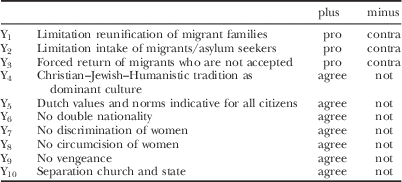Increasingly, West European party systems find themselves in a state of flux. In fragmented multiparty systems especially, mainstream parties are confronted with increasingly volatile electorates and the rise of, for example, green, radical right-wing populist or social populist parties. The growth of radical right-wing populist parties,Footnote 1 such as the Austrian Freiheitliche Partei Österreichs (FPÖ – Freedom Party of Austria), the Danish Dansk Folkeparti (DF – Danish People’s Party), the Dutch Lijst Pim Fortuyn (LPF – List Pim Fortuyn) and Partij Voor de Vrijheid (PVV – Party for Freedom), the Finnish Perussuomalaiset (PS – Finns Party), the French Front National (FN – National Front), the Norwegian Fremskrittspartiet (FrP – Progress Party) and the Swiss Schweizerische Volkspartei (SVP – Swiss People’s Party), and the concurrent politicization of immigration and integration issues have had considerable impact on the characteristics of West European party systems, such as the degree of fragmentation, the dimensionality of the political space, the level of polarization and the resulting patterns of coalition formation.
In the Netherlands, these developments have been particularly pronounced. Electoral support for the three oldest mainstream parties – the Christian democratic Christen-Democratisch Appèl (CDA – Christian Democratic Appeal), the social democratic Partij van de Arbeid (PvdA – Labour Party) and the liberal conservative Volkspartij voor Vrijheid en Democratie (VVD – People’s Party for Freedom and Democracy) – plunged from 84 per cent in 1981 to 55 per cent in 2010. The net volatility has gone up from 10 per cent in the 1970s and 1980s to more than 20 per cent since 1994 (Mair 2008). At the same time, the rise of the radical right-wing populist parties LPF and PVV has been accompanied by changes in the dimensionality of the political space (Otjes Reference Otjes2011; Pellikaan et al. Reference Pellikaan, de Lange and van der Meer2007), increasing polarization (Oosterwaal and Torenvlied Reference Oosterwaal and Torenvlied2010; Pennings and Keman Reference Pennings and Keman2008) and the realization of new and innovative government coalitions (Andeweg Reference Andeweg2008).
Yet, although these developments are noteworthy, it is unclear whether they fundamentally transformed West European party systems. The criteria for identifying change in party systems are quite stringent. According to Mair (Reference Mair1997: 51–2), ‘party system change occurs when a party system is transformed from one class or type of party system into another’. This transformation can be identified by analysing the direction of competition in a party system. As Mair (Reference Mair1997: 206) has argued, ‘what is perhaps the most important aspect of party systems . . . is the structure of inter-party competition, and especially the competition for government’. However, the tools for studying the structure of party competition in the classic party systems literature are limited. We therefore borrow from the formal literature on coalition formation and legislative behaviour to assess changes in the competition for government (cf. Mershon and Shvetsova Reference Mershon and Shvetsova2014: 31).2 In this literature the existence of a core party, or a pivotal player that largely determines the direction in which parties compete for office and votes, is crucial for the structure of party competition (e.g. Schofield and Sened Reference Schofield and Sened2006). The presence or absence of a core party determines whether party competition is centripetal or centrifugal, and whether coalitions will be formed through the centre or along the outskirts of the political space.
The developments in the Netherlands make it an excellent case for analysing change in fragmented multiparty systems. The highly open and proportional system used in Dutch elections translates changes in electoral support directly into changes in seat share, thereby presenting parties with strategic dilemmas and challenges. If responded to with positional change, these challenges can ultimately affect the structure of the party system as a whole. At the same time, the developments documented in earlier studies are not sufficient to pigeonhole the Netherlands as a clear case of a changed party system. First of all, it is possible that these developments have been temporary and that the Dutch party system has returned to its previous characteristics. A return to ‘normal’ would not be exceptional, given that after a decade of polarization and volatility in the 1970s Dutch politics quickly depolarized in the 1980s and 1990s. Second, it is possible that the abovementioned developments, although noteworthy, have not affected the direction of competition in the Dutch party system.3
This article assesses the extent to which the structure of the Dutch party system has changed since the earthquake elections of 2002. We do not focus only on the changes in party positions and levels of polarization, but especially on the way these affect the direction of party competition in the system as a whole. First, we present theories on the changing direction of party competition. We will assess the extent to which somewhat incremental shifts in party positions and seat share fundamentally affect the party system. Second, we will describe and explain the nature of political transformations that the Dutch fragmented multiparty system experienced after 2002.
Theorizing Party System Change
Increasing volatility, growing support for new parties and declining support for mainstream parties caused the latter to reconsider their (programmatic) strategies across Western Europe. Parties are likely to revise their strategies in response to changes in demand and supply on the political market (Schlesinger Reference Schlesinger1984), particularly when they are confronted with electoral losses (Harmel and Janda Reference Harmel and Janda1994). Potential strategic adjustments include, among others, addressing new issues or altering positions on existing issues.
Radical right-wing populist parties have been one of the main agents of change in West European party systems to which mainstream parties have responded (e.g. Mudde Reference Mudde2013, Reference Mudde2014). Their rise was accompanied by the emergence of a new dimension in the political space, which coexists with the traditional socioeconomic (left–right) dimension. This dimension is usually referred to as the libertarian–authoritarian or (socio)cultural dimension (see the conceptual model of Kitschelt Reference Kitschelt1995; or the empirical models of Kriesi et al. Reference Kriesi, Grande, Lachat, Dolezal, Bornschier and Frey2008; Van der Brug and Van Spanje Reference Van der Brug and van Spanje2009; Warwick Reference Warwick2002). The opposition on the dimension is between libertarians, who have a cosmopolitan, pluralist conception of citizenship, and authoritarians, who have a monoculturalist or nationalist conception of citizenship. Although many issues belong to the libertarian–authoritarian or (socio)cultural dimension, immigration and integration are primary issues determining parties’ positions in many West European countries. The importance of these issues for understanding voter and party competition (e.g. Benoit and Laver Reference Benoit and Laver2006; Van der Brug and Van Spanje Reference Van der Brug and van Spanje2009) has been extensively demonstrated. In the Netherlands, immigration and integration have been salient issues among the electorate since 1994 (Aarts and Thomassen Reference Aarts and Thomassen2008), but these issues only became politicized in 2002 (Pellikaan et al. Reference Pellikaan, van der Meer and de Lange2003, Reference Pellikaan, de Lange and van der Meer2007). At least since 2006 party choice in the Netherlands has been strongly structured by voters’ positions on the economic and the cultural dimensions (Van der Meer et al. 2012).
Yet, while the programmatic responses of established parties to the combined pressures are well documented (e.g. Bale Reference Bale2008; Bale et al. Reference Bale, Green-Pedersen, Krouwel, Luther and Sitter2010, 2013; Van Spanje Reference Van Spanje2010; for the Netherlands see Van Heerden et al. Reference Van Heerden, de Lange, van der Brug and Fennema2014), little is known about the ways in which the structure of party competition has evolved in response. The upsurge of radical right-wing populist parties could generate centrifugal forces if it weakens centrist mainstream parties and/or when mainstream parties of the left and right adopt different programmatic strategies that cause them to diverge (cf. Meguid Reference Meguid2005). However, the same upsurge could generate centripetal tendencies if these parties opt for strategies that create convergence in the centre of the political space.
The direction of competition is one of the main characteristics on the basis of which party systems are classified (e.g. Mair Reference Mair1997; Sartori Reference Sartori1976: 332). According to Mair (Reference Mair1997: 206), ‘what is perhaps the most important aspect of party systems, and . . . what distinguishes most clearly between different party systems: the structure of interparty competition, and especially the competition for government. To be sure, it might be argued that this is in fact the core variable underlying each of the other established classifications of party systems.’ When party competition is oriented towards the centre of the political space and patterns of cooperation and opposition are closed and predictable, party systems tend to be of the moderate pluralism variety (Sartori Reference Sartori1976). Inversely, when party competition is oriented towards the fringes of the political space and unpredictable and unstructured, party systems can best be classified as polarized pluralism (Sartori Reference Sartori1976).4 Consequently, ‘party system change occurs when a party system is transformed from one class or type of party system into another’ (Mair Reference Mair1997: 51–2) – that is, when a party system can no longer be qualified as a moderate pluralist system but is best characterized as a polarized pluralist system (or vice versa). Hence, the Dutch party system has truly and structurally been transformed only if the changing dimensionality of the Dutch political space and the subsequent repositioning of parties have had an impact on the direction of competition.
Party System Change: The Core and the Heart
To analyse the competition between Dutch parties we examine their placement in the political space and derive an important indicator for the absence or presence of centrifugal forces from these positions, namely the absence or presence of a pivotal player in the competitive space. Borrowing from the coalition-formation literature, and more specifically spatial models of electoral competition (Schofield Reference Schofield1993, Reference Schofield2008; Schofield and Sened Reference Schofield and Sened2006), we apply the concept of a core and heart to our analyses of the political space. Among a range of approaches used to analyse coalition formation and legislative behaviour, ‘the concept of the core is by far the strongest, and is also the one that links non-cooperative and cooperative theory’ (Mershon and Shvetsova Reference Mershon and Shvetsova2013: 21).5 The core can be defined as ‘a set of outcomes that cannot be defeated by any legislative coalition’ (Mershon and Shvetsova Reference Mershon and Shvetsova2013: 21–2). The core of the party system is the point in the political space at which all potential legislative majority coalitions intersect. It can be detected by determining the intersections of median lines – that is, straight lines through at least two party positions that divide the political space in two (Ordeshook Reference Ordeshook1986: 168). At least half of the parliamentary seats are on or to one side of the line and at least half are on or to the other side, assuring that the two parties that are on the median line can form a majority coalition with the other parties that are on either side of the line (Schofield and Sened Reference Schofield and Sened2006: 27). The median lines are denoted by an array z=(z 1 , z 2 , . . . , z n ), in which each z i reflects a party position in the political space.
When all median lines intersect at the same point in the political space, a core is present. Conventionally, a party will occupy that intersection point; that is, a core party can be identified (see Figure 1 in which party A is the core party). This is the party that is able to dominate coalition bargaining and that determines the direction of competition, as it is the one that is needed in all majority coalitions that could be formed. When the median lines do not intersect at the same point, there is no core party (see Figure 2).
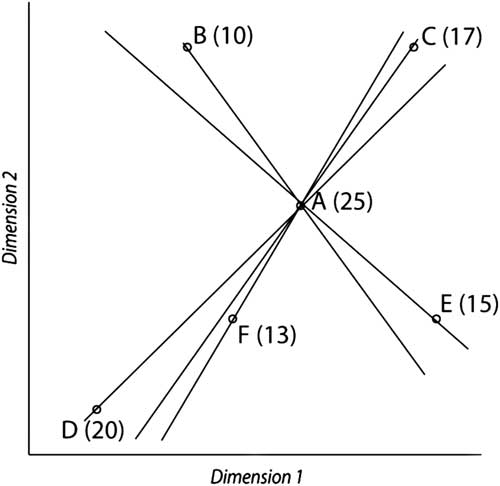
Figure 1 A Party System with a Core
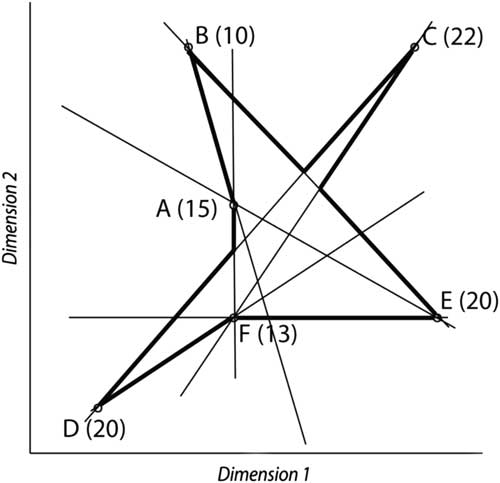
Figure 2 A Party System without a Core
The problem with the concept of the core is that a core party is less likely to exist as the number of dimensions in the political space increases (Laver and Schofield Reference Laver and Schofield1990; Schofield Reference Schofield1993, Reference Schofield2008; Schofield and Sened Reference Schofield and Sened2006). In a one-dimensional policy space, a core party exists by definition. While a core may or may not be present in a two-dimensional party space, it is quite rare in a three-dimensional party system. Nevertheless, large parties have the possibility of repositioning themselves in such a way that they become the core party when it is not present (Mershon and Shevtsova Reference Mershon and Shvetsova2014; Schofield et al. Reference Schofield, Grofman and Feld1988). Yet parties need not opt for such a strategic move even if this possibility is present.
Multidimensional political spaces thus by definition do not contain a core party. Ray (Reference Ray1989: 185) proposes redefining the core, arguing that it should not be blocked by any coalition, but by any credible coalition.6 Some coalitions are unlikely to form because policy or personal differences between parties are simply too large and parties exclude cooperation on a priori grounds (cf. Strøm et al. Reference Strøm, Budge and Laver1994). In this article we identify non-credible coalitions loosely – that is, defined by parties’ own explicit prior rejection of a potential coalition partner before the elections. Excluding these non-credible coalition options gives more room for the identification of a de facto core.
Even despite this modification a core still might not be present. In the absence of an occupied core, the political space has a heart (Schofield and Gallego Reference Schofield and Gallego2011: 304) – ‘a domain bounded by the compromise sets of various minimal winning coalitions’ (Schofield Reference Schofield2008: 3; see Figure 2). Especially in a multidimensional political space, a heart is more likely to exist than a core. In the absence of a core and depending on the degree of fragmentation, ideologically connected coalitions will primarily be formed on the outskirts of this political wasteland.
Although the concepts of the core and the heart are traditionally used to study coalition formation and parliamentary voting (e.g. Mershon and Shvetsova Reference Mershon and Shvetsova2013, Reference Mershon and Shvetsova2014; Schofield Reference Schofield2008; Schofield and Gallego Reference Schofield and Gallego2011), they can also be employed as a heuristic tool to study the structure of party competition (e.g. Laver and Schofield Reference Laver and Schofield1990; Schofield 1993). The presence of a core party indicates that party competition is centripetal, depolarized and stable. However, when a core party cannot be identified, competition between parties is centrifugal, polarized and unstable. In this situation, the size of the surface of the heart can act as an indication of the strength of the centrifugal and polarizing tendencies in the party system.7 Yet, concurrently, in the absence of a core party, it might be strategic for parties to hunt for the core – that is, to reposition themselves to become pivotal players. Mershon and Shvetsova (Reference Mershon and Shvetsova2013, Reference Mershon and Shvetsova2014: 29–31) demonstrate that a group of incumbents could in principle ‘steal’ the core by changing party allegiance or by creating a new parliamentary group, thereby altering parties’ negotiating positions. However, such strategies to obtain the core have not been employed in Northern European party systems.
Method
Measuring party positions and modelling a political space in which these positions in a specific election are depicted require the selection of sufficient issues that together reflect the appropriate dimensionality of the political space. As there is no inherent ‘true dimensionality’ (Benoit and Laver Reference Benoit and Laver2006: 110), we assessed which conflicts defined Dutch party politics in the period under study. Between 2002 and 2012, conflict has been structured by two dimensions: an economic dimension that includes issues like deregulation, privatization and tax reduction, and a cultural dimension that includes issues like restricting new immigrants and integrating old immigrants according to Western values and norms. Issues belonging to these dimensions dominated the electoral campaigns and vote choices from 2002 (Aarts and Thomassen Reference Aarts and Thomassen2008; Van der Meer et al. 2012; Van Holsteyn et al. Reference Van Holsteyn, Irwin and den Ridder2003).
To measure party positions on these dimensions we use a confrontational approach (Gemenis and Dinas Reference Gemenis and Dinas2010; Pellikaan et al. Reference Pellikaan, van der Meer and de Lange2003). This approach requires the selection of a number of items that correspond to particular policies, which parties either promote or reject in their manifestos. Parties can take three positions on each item (support, neutral or reject), resulting in a three-point scale. For example, one of the items used to measure parties’ positions on the economic dimension is ‘More market in health care’. Parties that explicitly reject this proposition in their manifesto will score −1 on this item, while parties that support more free market-oriented policies in health care score +1. Parties that have an ambiguous position or that do not refer to an item at all, receive a score of 0. While mentioning an item twice or more probably means that a party sees this proposal as important, it does not change the party’s position on the item. Thus, the confrontational approach measures policy positions, not saliency. In this respect the confrontational approach differs from the Comparative Manifesto Project (Budge et al. Reference Budge, Klingemann, Volkens, Bara and Tanenbaum2001; Klingemann et al. Reference Klingemann, Volkens, Bara, Budge and Macdonald2006; Volkens et al. Reference Volkens, Bara, Budge, McDonald and Klingemann2013) and from studies using Wordfish (Proksch and Slapin Reference Proksch and Slapin2010) or Wordscores (Laver et al. Reference Laver, Benoit and Garry2003) to measure party positions, as they rely on the counting of (quasi)sentences or words.
The underlying idea behind the confrontational approach to measuring party positions is very similar to making an index of a number of answers to questions in a survey. We measure abstract concepts or beliefs (the preference for a monocultural society versus a multicultural society; the support for market-oriented economic policies versus support for state interventionist policies) through a number of statements (items) that are related to that underlying abstract concept. For each scale we use 10 different items, which together measure a party’s position on a dimension (see Appendix). Consequently, the cultural and the economic scales are each 21-point scales, with a minimum score of −10 and a maximum score of +10.
The selected items must satisfy the minimum requirement of scalability to guarantee that they measure the same underlying abstract concept. We applied Mokken scale analysis to deal with the unequal variances and the hierarchical structure of the items (Van Schuur Reference Van Schuur2003). These analyses demonstrate that the items scale well and form two separate dimensions (see Appendix). Party positions were also compared with other measures, such as those derived from expert surveys (Benoit and Laver Reference Benoit and Laver2006) and the Comparative Manifesto Project (Budge et al. Reference Budge, Klingemann, Volkens, Bara and Tanenbaum2001; Klingemann et al. Reference Klingemann, Volkens, Bara, Budge and Macdonald2006; Volkens et al. Reference Volkens, Bara, Budge, McDonald and Klingemann2013), confirming that the confrontational approach measures by and large the same positions as other methods.
The confrontational approach measures party positions relative to the status quo. And that status quo is prone to change under the influence of new policies, new governments or external events. Hence, even when we use exactly the same item for coding the manifestos of 2002, 2006, 2010 and 2012, it does not measure exactly the same positions, simply because the status quo changed.8 The fluidity of the status quo and the margins to change policy imply that there is a need to be careful when comparing the political space across time.
Coalition Politics and Party System Change in the Netherlands
2002: A Christian Democratic Core
To assess how the Dutch party system has changed since the breakthrough of the LPF, we first analyse parties’ positions on the economic and the cultural dimensions in 2002. Figure 3 shows the position of the nine parties represented in the Tweede Kamer after the 2002 elections on the economic dimension (x axis) and the cultural dimension (y axis). The parties occupy the four quadrants of the political space. GroenLinks (GL – GreenLeft) (−6,−6) and the Socialistische Partij (SP – Socialist Party) (−8,−2) are located in the left-multicultural quadrant and combine a preference for more state intervention in the economy with a preference for a multicultural society. However, there are some differences between the positions of the two parties, with GL taking a more outspoken position on the cultural dimension and the SP located closer to the extreme of the economic dimension. In the right-multicultural quadrant Democraten66 (D66 – Democrats66) (+5,−3) and the PvdA (+2,−1) can be found, but the latter party is located closer to the centre of the political space than the former. Most Dutch parties (CDA, Leefbaar Nederland (LN – Liveable Netherlands), LPF, Staatkundig Gereformeerde Partij (SGP – Reformed Political Party) and VVD) are situated in the top-right quadrant, favouring more market and monoculturalism. The LPF takes the most outspoken stances on the cultural dimension (+7), whereas the VVD is located the furthest to the right on the economic dimension (+8). Finally, the ChristenUnie (CU – ChristianUnion) (−1,+2) positions itself just to the left of the left–right divide. Figure 3 also highlights that in 2002 the level of polarization was relatively low, with agreement scores of 0.59 on the economic dimension and 0.57 on the cultural dimension.9 All in all, the positions and polarization levels by and large reflect the depoliticized nature of politics in the Netherlands that existed in the 1990s.
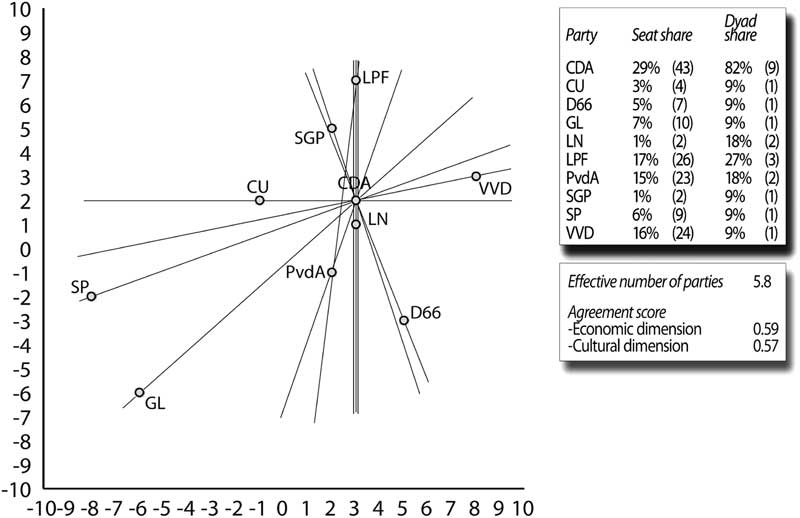
Figure 3 The Dutch Party System in 2002: A Christian Democratic Core
To assess whether party competition in 2002 was centrifugal or centripetal we examine whether a core is present in the political space. Figure 3 presents all 11 median lines that divide the political space in two halves with majority coalitions.10 For instance, the vertical line between CDA and LPF divides the space between east and west. The CDA and the LPF can form a majority coalition with parties on each side of this median line: in the east with potential coalition partners D66 and VVD, and in the west with the potential coalition partners CU, GL, PvdA, SGP and SP. Figure 3 shows that there is no core in the Dutch party system in 2002. Since one median line [z PvdA , z LPF ] does not go through z CDA , the CDA cannot be classified as a core party. However, Ray’s (Reference Ray1989) modification of the concept of the core excludes non-credible coalitions. In 2002 the PvdA and the LPF could not form a credible coalition alternative, as the former repeatedly declared in the run-up to the elections that it refused to cooperate with the LPF.11 Thus, as all credible majority coalitions require the participation of the CDA, it can be qualified as the modified core party in 2002 and it still dominates the coalition formation process. The presence of a core party suggests that the direction of competition in the political space was centripetal and a centrist coalition was most likely to form. The outcome of the coalition-formation process confirms these expectations. The CDA sought to rein in the LPF electorally by making it a coalition partner. Cooperation between these parties on the one hand, and the VVD on the other, made most sense in terms of coalition range and size (De Lange Reference De Lange2011). The preferences of these three parties led to the formation of the coalition {CDA, LPF, VVD} in the aftermath of the 2002 elections.
2006: The Core Crumbles
After the 2002 elections the LPF rapidly lost electoral support. The early elections of 2003 saw the party’s seat share drop by 65 per cent, and by the end of 2006 it was no longer represented in the Tweede Kamer. However, Geert Wilders, a former parliamentary representative for the VVD, stepped into its electoral niche. In 2005 he founded the PVV, a radical right-wing populist party that campaigns primarily on Islam-related issues. The party entered parliament in 2006 with 5.9 per cent of the vote.
At first sight, the configuration of parties in the political space of 2006 seems similar to that of 2002 (see Figure 4). The PVV (+2,+9) fills the void left by the LPF, while the VVD (+7,+1) remains the most right-wing party on economic issues. The SP (−6,−2) remains located in the bottom-left quadrant, though less outspoken on economic issues (most notably on budget deficits). However, behind these superficial similarities lie notable changes. Most importantly, the two largest parties (CDA, PvdA) are further apart than in 2002, mainly because the Labour Party (−4,−4) moved to the left on the economic dimension to distinguish itself from the previous right-wing government. Concurrently, the Christian Democrats (+2,−1) moved towards the right, a trend that would continue over the next years. Equally interesting are the changes in the positions of three smaller parties. GL (−1,−8) moved towards the right in an attempt to become more liberal. D66 (+6,−3) adopted a more right-wing position closer to the VVD. CU (−6,−4) repositioned itself as a decidedly left-wing, multicultural party. These movements affected the level of polarization: the agreement score on the economic dimension dropped to 0.41, which signals increasing polarization in 2006.
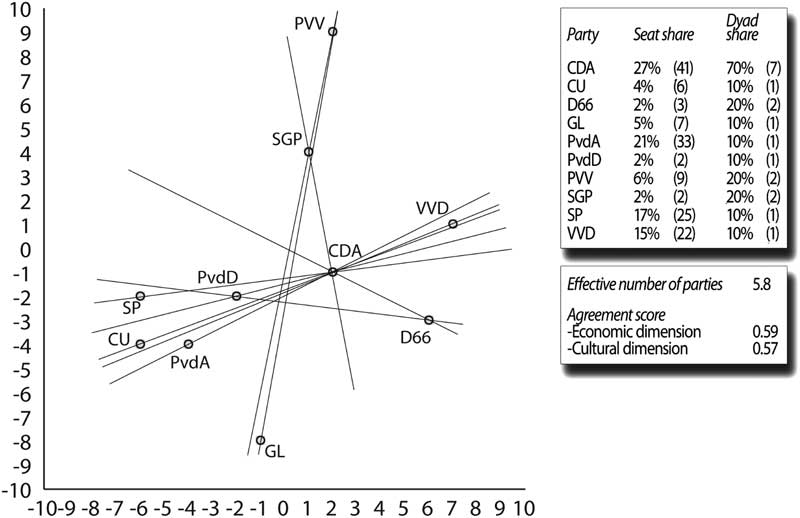
Figure 4 The Dutch Party System in 2006: A Crumbling Core
In 2006 the core begins to weaken (see Figure 4). Even though electoral support for and the political position of the CDA hardly changes from 2002, more majority coalitions are possible without that party. Nevertheless, the CDA is included in seven of the 10 median lines and it therefore remains an important player in the coalition-formation process. The three median lines without the CDA run through parties that are not credible coalition partners. Two ([z PVV , z GL ] and [z PVV , z SGP ]) require the collaboration of the PVV with at least one left-wing, pro-multicultural party (GL, the PvdA or the SP). Given that the PVV predominantly campaigns on cultural issues and against the political left (which it blames for failed multicultural policies), it is highly unlikely that it would be open to this possibility. The third median line without CDA [z PvdD , z D66 ] would require six parties to cooperate to exclude the Christian Democrats from power.
All in all, the CDA remains the modified core party in 2006. As such, it dominated the coalition-formation process. A centrist majority coalition comprising the CDA and PvdA formed, as the centre-right majority coalition of the CDA, D66 and the VVD was unlikely to be reinstated. However, although the CDA remains the core party, its dominance is diminishing.
2010: No Occupied Core
At first sight, the configuration of Dutch parties in the political space of 2010 seems more or less similar to 2002 and 2006, with GL (−2,−3) and the PvdA (−1,−1) located in the left–multicultural quadrant, D66 (+5,−1) in the right–multicultural quadrant, and the CDA (+7,+3), the PVV (+2,+9), the SGP (+3,+2) and the VVD (+10,+5) in the right–monocultural quadrant (see Figure 5). However, several changes in positions occurred between 2002 and 2010. On the economic dimension the change in the position of the CDA stands out. In 2010 the party is more market oriented than in 2002 and 2006, abandoning its centrist position in the political space for a more neoliberal position on the right of the economic dimension. Consequently, the distance between the CDA and the VVD on this dimension diminished. On the cultural dimension we see a less outspoken preference for multiculturalism for D66 and GL, a move towards the monocultural end of the cultural dimension by the VVD, and less support from the CU and the SGP for monocultural policies. These positional shifts heightened polarization on both the cultural and the economic dimensions, with agreement scores declining to 0.53 and 0.27 respectively.
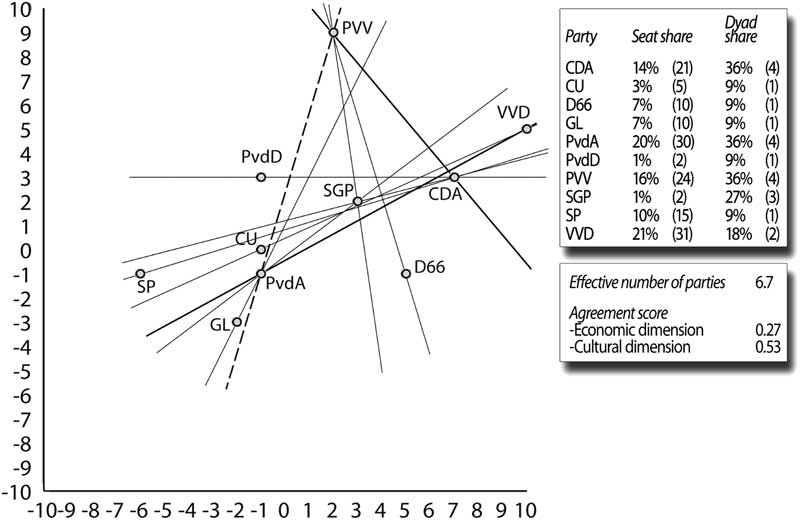
Figure 5 The Dutch Party System in 2010: No Occupied Core
To assess whether party competition in 2010 is centrifugal or centripetal, we again look for a core in the political space (see Figure 5). Eleven median lines divide the party system in majority coalitions, yet few of these median lines intersect at the same point in the political space. There are no pivotal players, as no party is situated on a majority of the median lines. Rather than ‘hunting the core’ (Mershon and Shvetsova Reference Mershon and Shvetsova2014), programmatic shifts have led the CDA to abandon the decisive position in coalition formation. The largest party in 2010 (VVD) is even less pivotal than the three smaller parties (CDA, PvdA and PVV), due to its position on the fringes of the political space.
The political space of 2010 has no core. Even when non-credible coalitions are excluded from our analysis, a modified core and a core party cannot be identified. After eight years in government and severe electoral decline, the CDA lost its status as a dominant party in the Dutch party system. Without a core party and with an empty heart, party competition is centrifugal: coalitions with a clear ‘left’- or ‘right’-wing signature are most likely to form. Despite the clustering of parties at the outskirts of the political space (GL, PvdA and SP in the left–libertarian quadrant, CDA and VVD in the right–authoritarian quadrant), neither of these blocs has an electoral majority, which prevents the alternation that is common in, for example, the Danish, Norwegian and Swedish party systems from taking place.
In the absence of a core it is difficult to predict which majority coalition is most likely to form after the 2010 elections. Figure 5 reveals an evident heart without an occupied core in the centre of the political space: a political wasteland, so to speak, in which no parties are positioned. The border of the heart is formed by three median lines: [z PVV , z PvdA ], [z PVV , z CDA ] and [z CDA , z PvdA ].12 Formally, the three most likely homogeneous, minimal coalitions are defined by the median lines that do not cut through the heart. Yet, one of these coalitions was not a credible alternative, since the leaders of the PvdA and PVV had made it very clear in the 2010 campaign that they would not govern together.
The other two median lines in Figure 5 ([z PVV , z CDA ] and [z VVD , z PvdA ]) do represent lines of credible majority coalitions. The south-east side of the median line [z VVD , z PvdA ] reveals the possibility of forming the coalition {VVD, PvdA, D66 and GL}, {VVD, PvdA and CDA} or {VVD, PvdA, CDA, D66 and GL}. The first potential coalition became known as the ‘purple-plus’ coalition, a possibility that was extensively explored during the coalition negotiations.13 The other options were hardly discussed, because the coalitions would be oversized and/or ideologically diverse.14 On the north-east side of the median line [z PVV , z CDA ] a second potential coalition can be found controlling a minimal majority in parliament, comprising the CDA, PVV and VVD. After lengthy negotiations this coalition was formed, although the CDA and VVD decided not to include the PVV in the cabinet. Instead, the party was asked to support a minority coalition.
2012: Neither a Core nor a Heart
The electoral campaign of 2012 took place in the late summer of 2012. During the campaign, electoral support for most parties shifted immensely. The last weeks of the campaign were dominated by the battle between the leaders of the PvdA and VVD, both of which came out victorious (PvdA +5.1 percentage points and VVD +6.1 percentage points). By contrast, the CDA lost eight more seats, while the PVV lost nine of the 24 it had held.
Figure 6 illustrates how the parties positioned themselves in 2012. There are some intriguing shifts compared with 2010. The CDA (+3,−3) moderated its position on both dimensions, distancing itself from its former coalition partners PVV and VVD, and somewhat closer to the PvdA (−2,−1). On the left, the programmatic unity of GL, the PvdA and the SP diminished. In 2012 the SP (−8,−2) was clearly the most left-wing of the three on economic issues, and GL (−3,−5) the most in favour of multiculturalism. As a consequence of these adjustments in party positions, polarization on both dimensions increased even further, with agreement scores reaching 0.47 on the cultural dimension and 0.20 on the economic dimension.
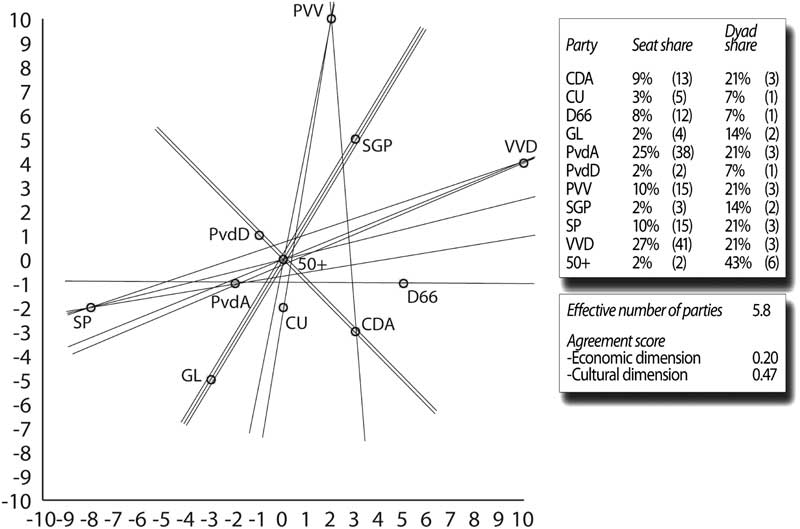
Figure 6 The Dutch Party System in 2012: Neither a Core nor a Heart
Figure 6 maps the competitive political space in 2012 and depicts the median lines that determine the majority coalition alternatives. Remarkably, while all median lines run through the middle of the figure, no core or pivotal player can be identified. Although six median lines run through the newly established elderly party 50+, the party is superfluous in all but one of the coalition governments they delineate. None of the other parties that are included in the median lines can be qualified as a pivotal player either. Given their size, no majority coalition is possible without the PvdA and/or VVD, but due to the fragmentation and polarization of the Dutch party system neither is able to singly dominate the coalition-formation process in 2012.
What is more, unlike in 2010, there is no ‘empty heart’. This configuration – without a core, but also without a heart – is a novelty, not predicted by the theory of Schofield (Reference Schofield1993, Reference Schofield2008). Such a constellation has important implications. Firstly, the only feasible majority coalitions require agreements between ideologically distant parties. Secondly, many majority coalitions require the inclusion of a relatively large number of (junior) partners. The only way to circumvent this outcome is to exclude some of the smaller parties that are located between the main coalition parties and thus form an unconnected but minimal winning coalition. This is exactly what happened in 2012, when the VVD and the PvdA formed a government headed by Mark Rutte. Figure 6 shows that there were few alternatives, as many coalitions were unlikely: any coalition without both the VVD and the PvdA would require at least four partners. Most combinations with the PVV were ruled out on a priori grounds, either for ideological or for strategic reasons. And a left-wing collaboration would easily have required six parties (e.g. {PvdA, SP, CDA, GL, CU, PvdD}) due to their small size.
The Dutch party system in 2012 without a core or a heart resulted in a majority coalition between two parties that are ideologically disconnected on both the cultural and economic dimensions. This outcome provides a number of important lessons about (theories of) party competition. Most importantly, in this constellation party competition is neither centrifugal nor centripetal. Rather, the competition has lost its structure altogether. The tensions that developed within the governing parties, exemplified by the revolt of members of the VVD in 2012 and the departure of a number of parliamentary representatives, especially from the PvdA in 2013 and 2014, are testament to this observation. Moreover, in this constellation the opposition to the government’s agenda comes from both fringe parties (e.g. PVV and SP) and moderate parties (e.g. CDA, D66).
Discussion
Across Western Europe mainstream parties face growing electoral challenges. The Netherlands is a typical example where increasingly volatile voters and the rise of successful radical right-wing populist parties have led to the decline of mainstream parties. This has resulted in fragmentation, polarization and the dimensional transformation of the political space. These developments accelerated after the LPF entered the Dutch parliament and formed a majority coalition with the Christian democrats and the liberals in 2002. LPF-leader Fortuyn reshaped the political agenda, leading to a new sociocultural line of conflict and forcing established parties to strategically (re)position themselves in this conflict. Further changes occurred when a second radical right-wing populist party, Geert Wilders’ PVV, experienced success in the 2006 elections. Established parties that used to be located in the centre of the political space, most notably the CDA and PvdA, drifted apart. At the same time, other parties moved towards the centre of the socioeconomic dimension, resulting in the emergence of distinct clusters of parties in the Dutch party system.
These shifts fundamentally altered the structure of competition of the Dutch party system. It gradually lost its centre of gravity, as the CDA could not and would not function as a core party. After first indications that the core was eroding in 2006, a heart emerged in the centre of the Dutch political space in 2010. Consequently, coalition bargaining became more complex as there was no single party that held all the cards, and party competition turned centrifugal. But the party system evolved even further. After 2012, the Dutch party system neither has a core nor a heart. There is no single cause for this transformation. Neither the high levels of electoral volatility in general nor the programmatic shifts of the former core party CDA offers a sufficient explanation.15 The emergence and subsequent disappearance of the heart in this space is ultimately due to the combined effect of electoral shifts and programmatic changes of the former core party, the CDA.
These developments have serious implications for the direction of competition in the Dutch party system, and hence for its classification in conventional typologies. Since the centre no longer holds, the direction of competition in the Dutch party system has changed. Until 2002 the Dutch party system was characterized by centripetal forces and, consequentially, centrist coalitions. After 2006 such forces are no longer present. Instead, the Dutch party system is being challenged by centrifugal forces, which led to the formation of a coalition with a clear right-wing signature in 2010. At that point, the Dutch party system was more akin to a polarized than a moderate multiparty system.
Yet, in 2012 the lack of a core or heart brought us into uncharted territory. A new constant is the increasing difficulty with which coalitions are formed. This development is well illustrated by the formation of a minority government in 2010, and of a majority coalition between two ideologically distinct parties in 2012. Due to the high levels of electoral volatility, both coalition governments were forced to rely on support of additional junior partners in the Upper House to obtain parliamentary majorities. The government–opposition divide has rarely been so unclear, party competition rarely so unstructured.
These conclusions about the Dutch party system are relevant for formal modellers of legislative and coalition behaviour, as well as comparative party politics. First, our analyses highlight the possibility of the emergence of a political space without a heart or a core. This configuration has not been described in the formal literature on legislative and coalition behaviour (cf. Mershon and Shvetsova Reference Mershon and Shvetsova2014). In this configuration, unstructured party competition of all against all, which ultimately leads to government instability, takes place. Yet, it is unclear whether this configuration can have longevity. It could be that a party system will ultimately return to more structured patterns of competition.
Second, the developments in the Netherlands resemble those taking place in other fragmented multiparty systems. In Belgium and Finland, for instance, the demise of mainstream parties and the emergence of new parties have weakened the core, made government formation more complex and coalitions less stable. Ultimately, the direction of competition itself shifted, as is evidenced by the government participation of the PS in Finland and the Nieuw-Vlaamse Alliantie (N-VA – New Flemish Alliance) in Belgium. However, in the equally fragmented party systems of Scandinavia – most notably those in Denmark, Norway and Sweden – pre-existing patterns of bloc competition and minority governance attenuated the effects of the rise of successful parties on the fringes of the political space. It is not unlikely that party competition in Belgium, Finland and the Netherlands will start to resemble this ‘Scandinavian model’ more closely, if only out of the necessity to cope with the electoral volatility and shifting parliamentary majorities to follow from it. The Netherlands has already gone down this road by forming its first minority government in 2010.
Supplementary Material
To view supplementary information for this article, please visit http://dx.doi.org/10.1017/gov.2016.20.
Appendix
Ten items for economic dimension
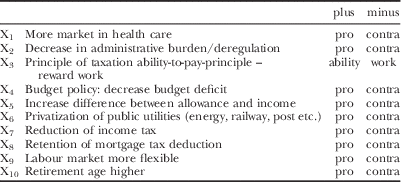
Ten items for cultural dimension
